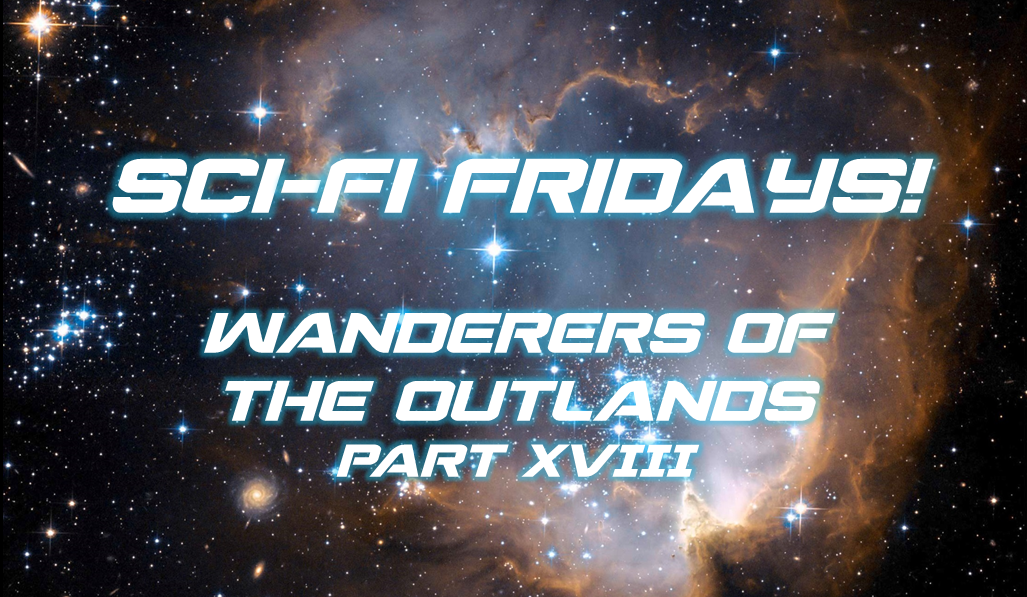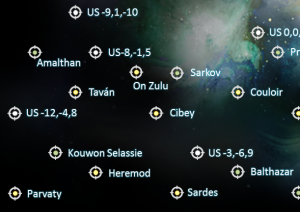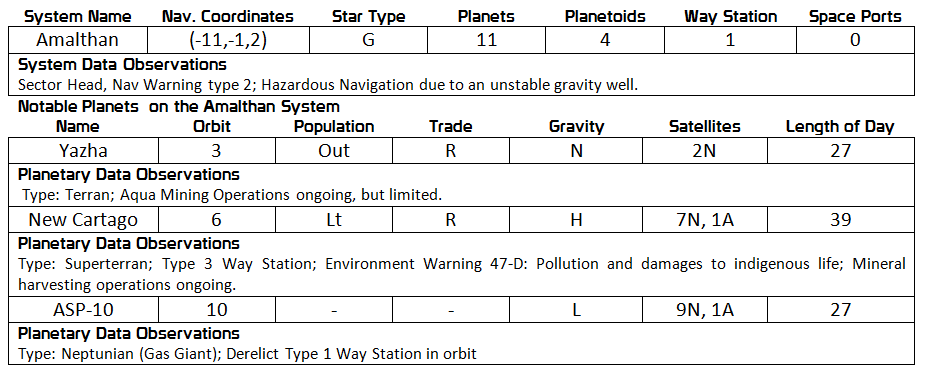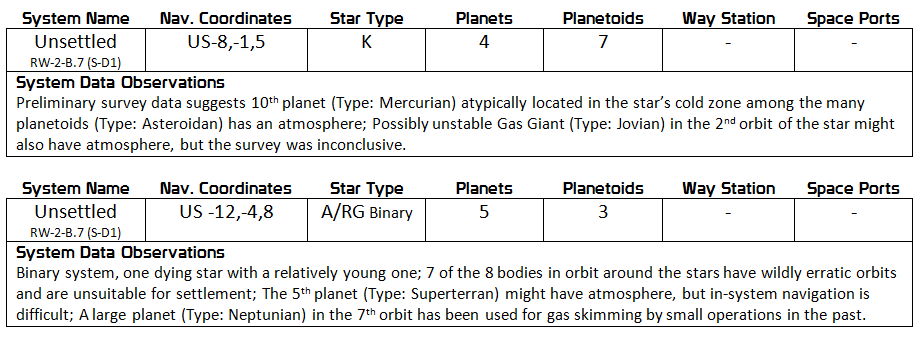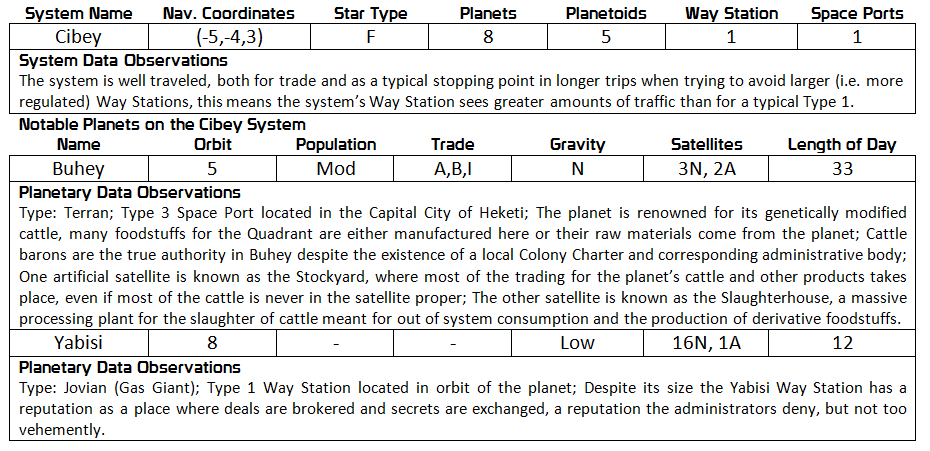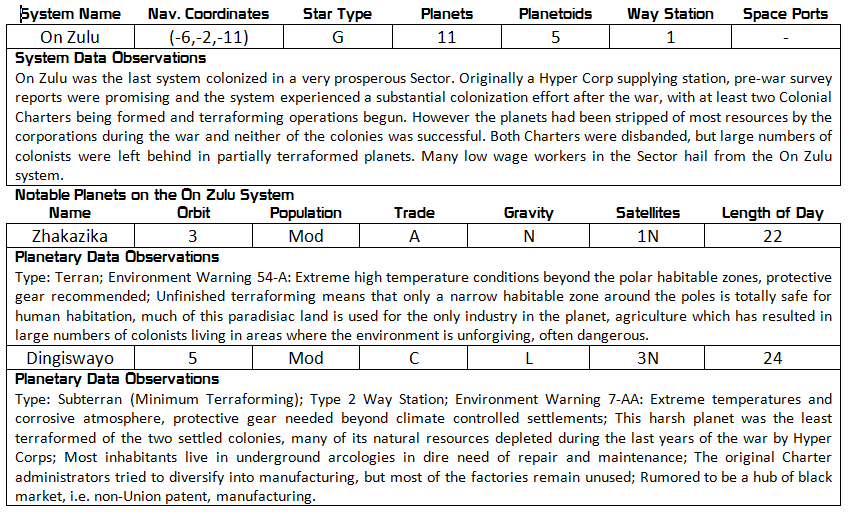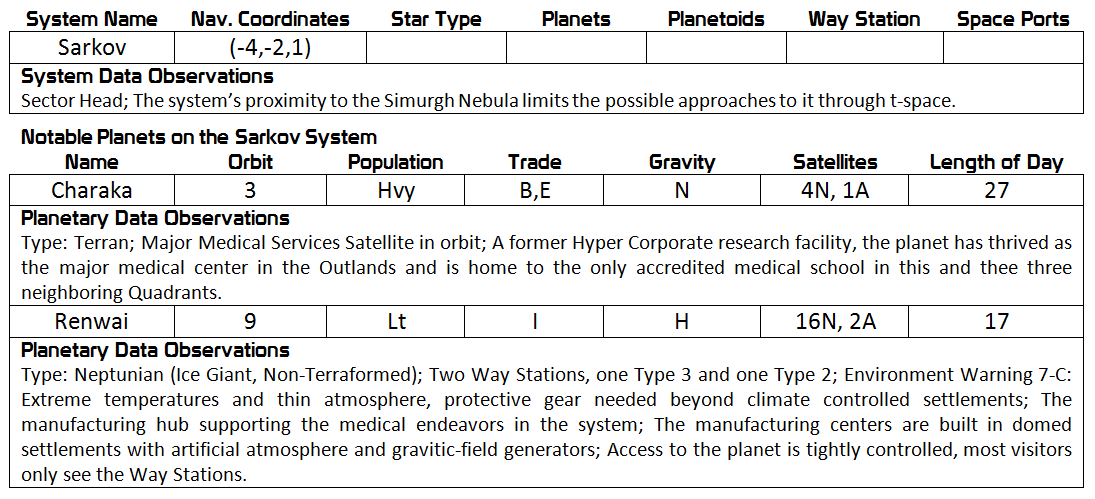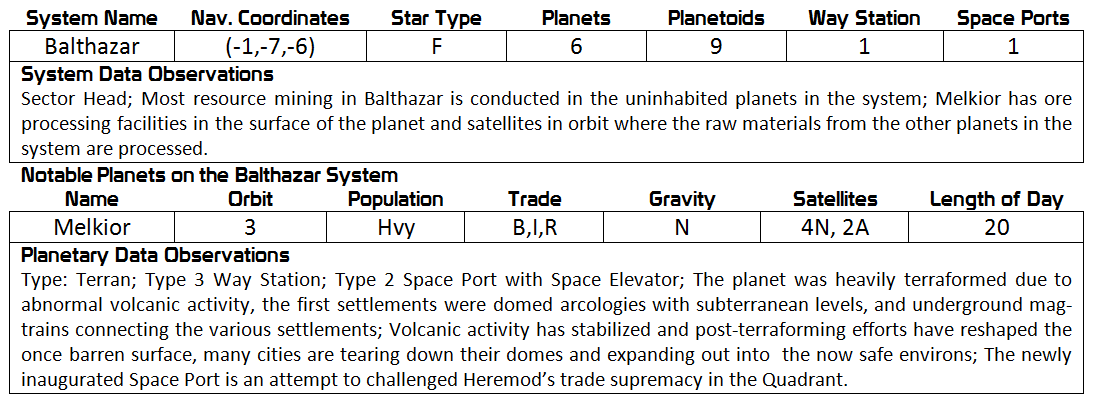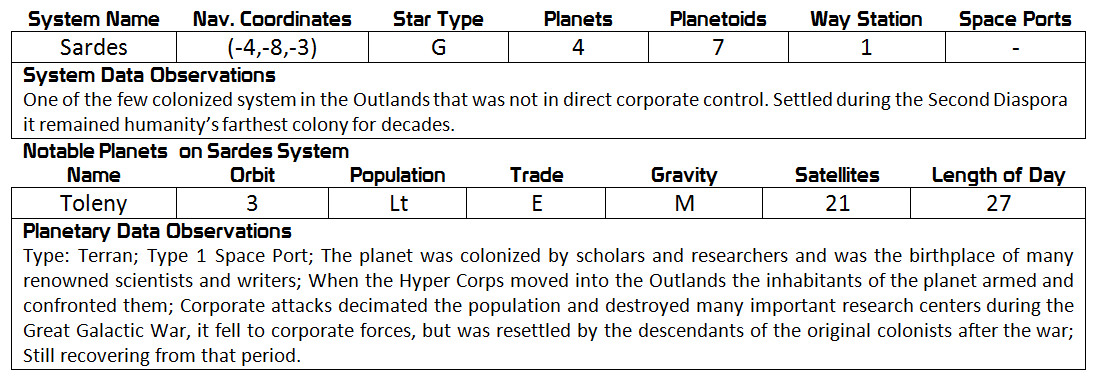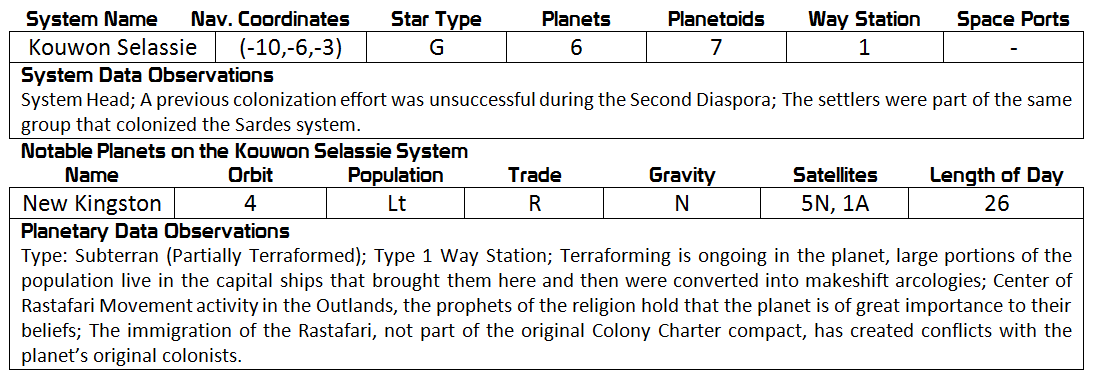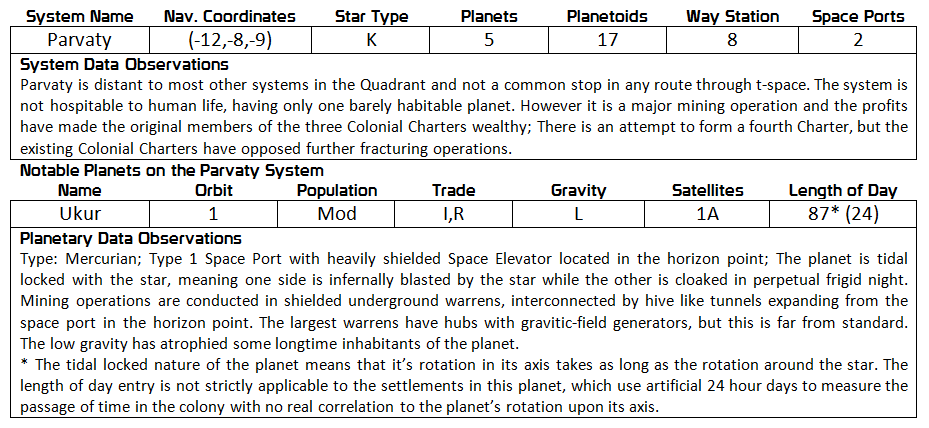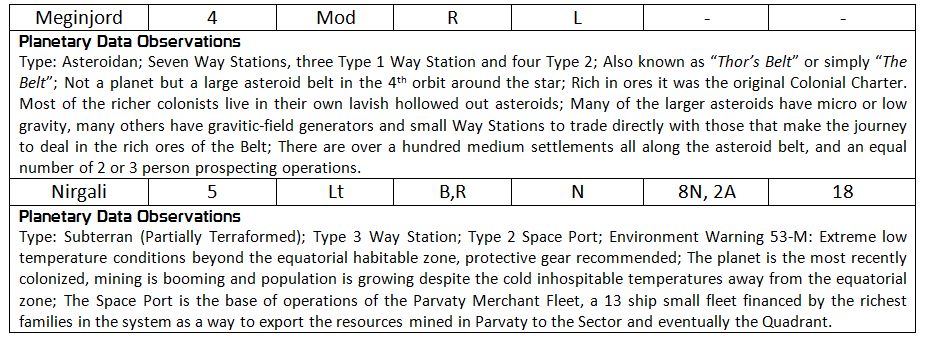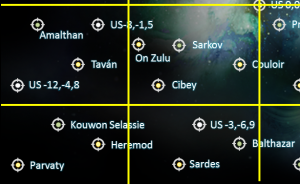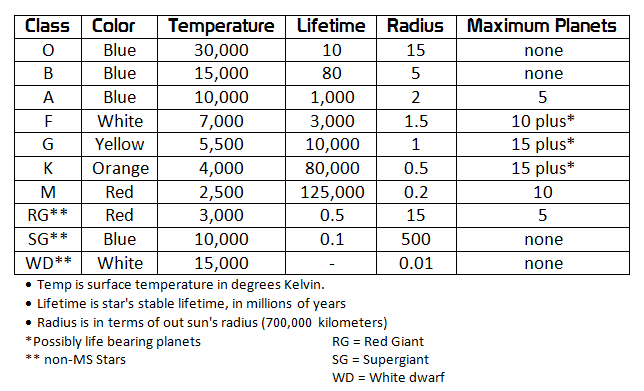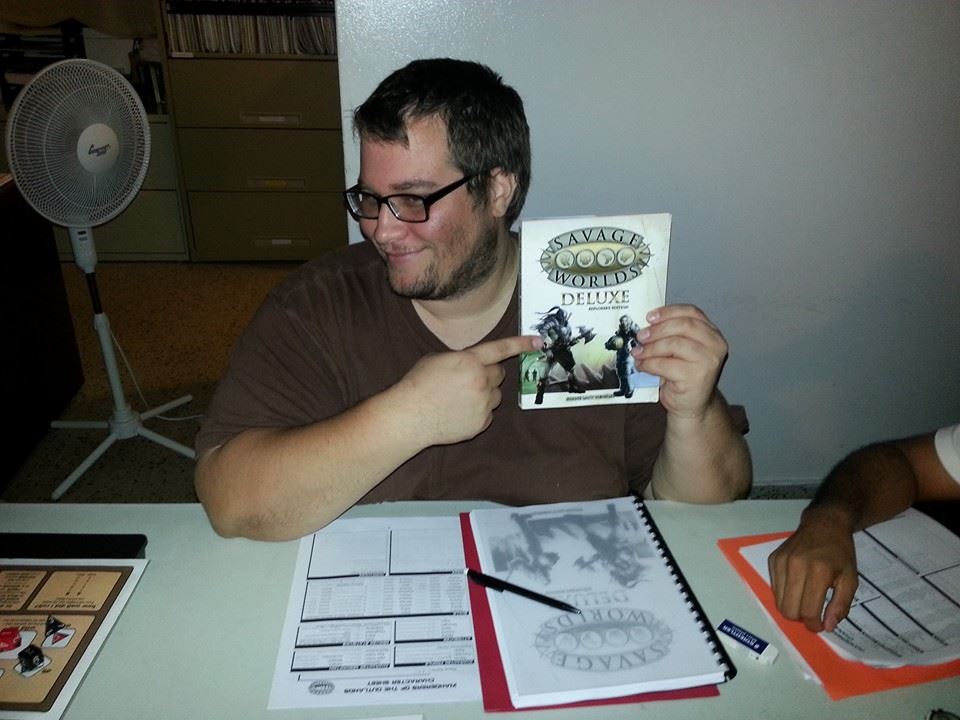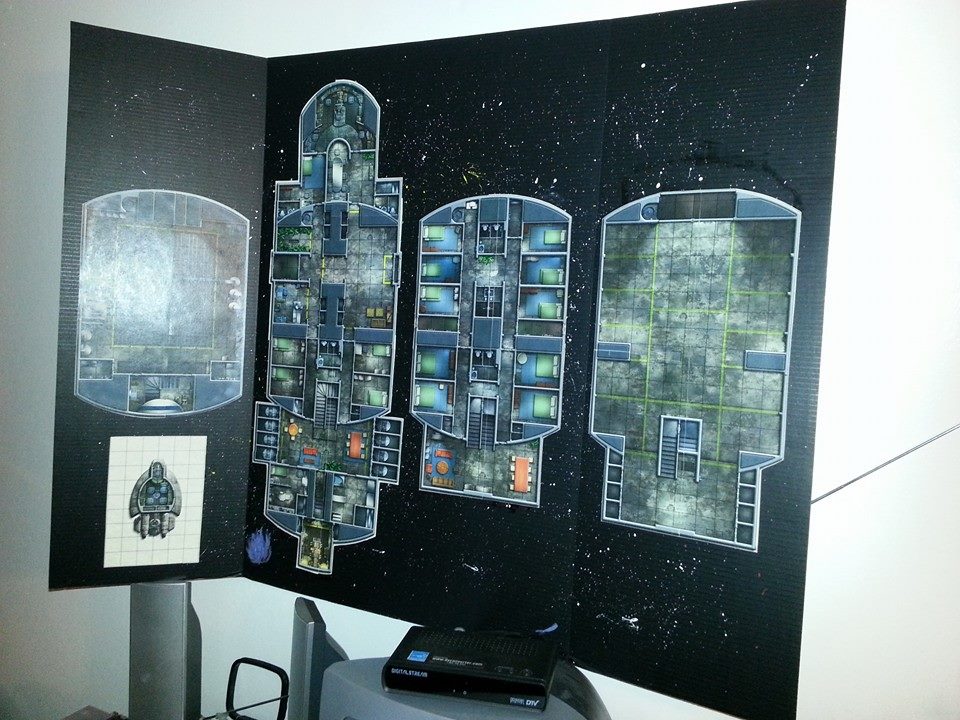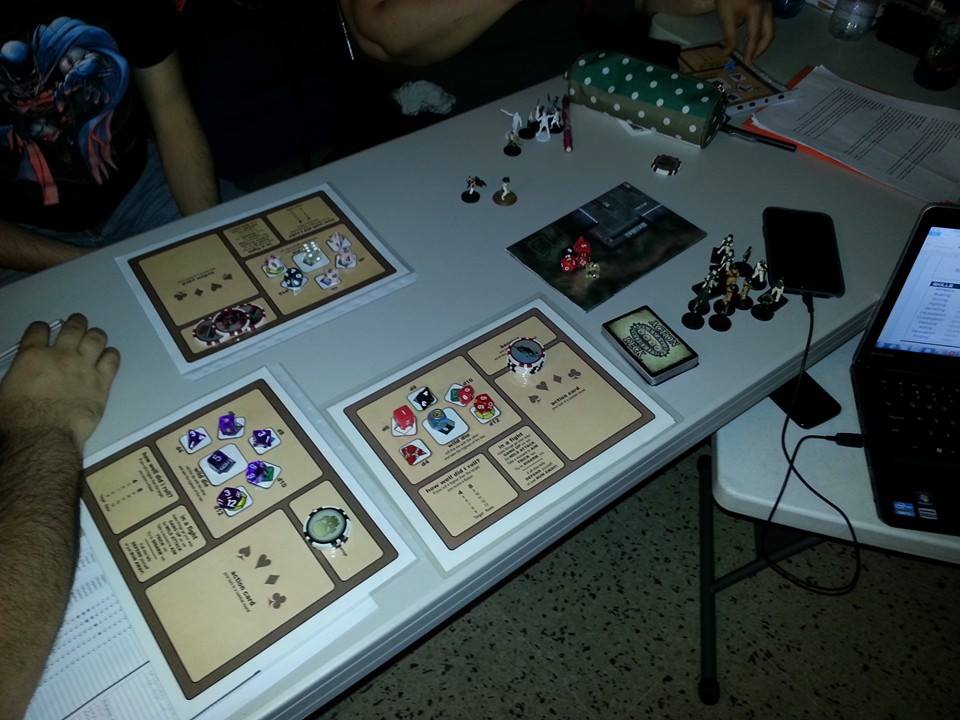As I mentioned two weeks ago, we are on the last leg of the Wanderers of the Outlands material (even if I wrote another piece of fiction for my players this week). Last week I took a break and shared an interview with the creator of the Future Armada series I’ve been referencing. This week it’s part 2 of the Journeyman’s Gazette, an in game publication, part newspaper, and part classified ads.
This second part is the bonus content for the Journeyman’s Gazette, a Quadrant Guide to the area of space where the characters are currently adventuring in. Some of the terms used at the end of the quadrant guide are taken from the Star Frontiers books in case they look familiar. They might not be the most scientifically accurate, but they are my tribute to one of my old favorites, and they work for my purposes. I hope you enjoy this. See you all next week!
The Journeyman’s Gazette, Part 2
Bonus Content
[Loading Quadrant Guide… Price – O.00 UC, Included in Journeyman’s Guild Membership]
Quadrant RW-2-B.7: D Guide, AKA Outland Quadrant D
This Quadrant Guide is compiled from survey data and the input of our correspondents all over the Union. While we try to keep the data as updated as possible, we cannot guarantee with certainty that the notes and observations of our correspondents are accurate. The information in the system data and planetary data observations section includes the opinions of the individual correspondents. If you have information that could help update the data in this guide, please contact your local Journeyman’s Guild Chapter librarian.
There is an explanation of terms used in the following guide at the end of this document.
Sector RW-2-B.7 (S-D1), AKA Sector D1
Sector RW-2-B.7 (S-D2), AKA Sector D2
Sector RW-2-B.7 (S-D3), AKA Sector D3
Sector RW-2-B.7 (S-D4), AKA Sector D4
EXPLANATION OF TERMS USED IN THE GUIDE
Star Type
Normal stars, called Main Sequence (MS) stars, fall into seven categories, called spectral classes. The spectral class of a star indicates the star’s surface temperature and depends on the mass of the star. The table below gives some characteristics of the seven spectral classes of MS stars, as well as those of three non-MS stars.
Population
Population indicates how many intelligent beings live on the planet and how many cities there are. This information is given in a two- to three-letter code that describes the population size:
- Hvy – Heavy population: The planet has numerous large cities and hundreds of smaller cities. Individual cities may be considered mega-cities that cover thousands of square kilometers.
- Mod – Moderate population: The planet has several large cities and numerous small cities.
- Lt – Light population: The planet has only a few small cities.
- Out – Outpost: The planet contains only a small outpost or colony. At most, it has only one small city and possibly some small settlements located nearby.
Trade
Trade indicates the planet’s major trade(s). Each major trade is listed with a one letter code. Some planets have more than one major trade item. The trade item(s) listed is the most important. The abbreviations follow:
- A – Agriculture: The planet’s economy is based on farming, whether natural or synthetic. This includes grain farming, fruit or vegetable farming, livestock, fish, lumber, textiles, and other such businesses.
- B – Business: The planet’s chief product is mercantile operations. Such a planet usually has offices complexes along with massive showrooms and demonstration areas. Also in abundance are thousands of bazaars where one can find almost everything imaginable. Some planets are tourist centers that make a large amount of their planetary income on vacation sites and entertainment centers.
- C – Colony: This is a special category, a colony planet still in development with no discernable major trade.
- E – Education: The planet’s chief industry is educational or scientific study
- I – Industry: Most of the planet’s economy is based on manufacturing. Settlements are built around factories or processing plants, and most of the inhabitants work there. Raw materials may either be mined on the planet or shipped in from another planet.
- M – Military: The planet is the location of huge military complex. This requires some industry and resource mining to be conducted on the planet and the planet is under the tightest security. Military planets are usually settled by the UAF for development, growth, and testing or by a stellar nations that need to heavily fortify a Sector
- R – Resource Mining: The planet is rich in natural resources like metals, fossil fuels, gems, crystals, or radioactive materials. Most of these raw materials are shipped to industrial planets for processing.
Gravity
Classified into the following categories:
- SH – Super Heavy
- H – Heavy
- N – Normal
- L – Low
Satellites
Total number of satellites orbiting the planet, divided into
- N – Natural satellites, typically moons
- A – Artificial satellites, typically Way Stations or space stations
Length of Day
- Number of Standard Hours it takes the planet to complete a rotation on its axis.
Well that’s the end of the Gazette. Just so you know, we finally began to play the campaign after character creation and all the little details. My players wrote some pretty interesting background stories for their characters. Before I go one final question… Would you be interested in reading my players character’s background stories? I have to talk to them and see if they would allow me to share them, but would you be interests in readying how my players visualized their characters in the milieu?
And finally, for those of you who don’t follow me on Facebook, Twitter or Google+ where I shared this, pictures from our first official session. I present to you, the Lair Regulars!

